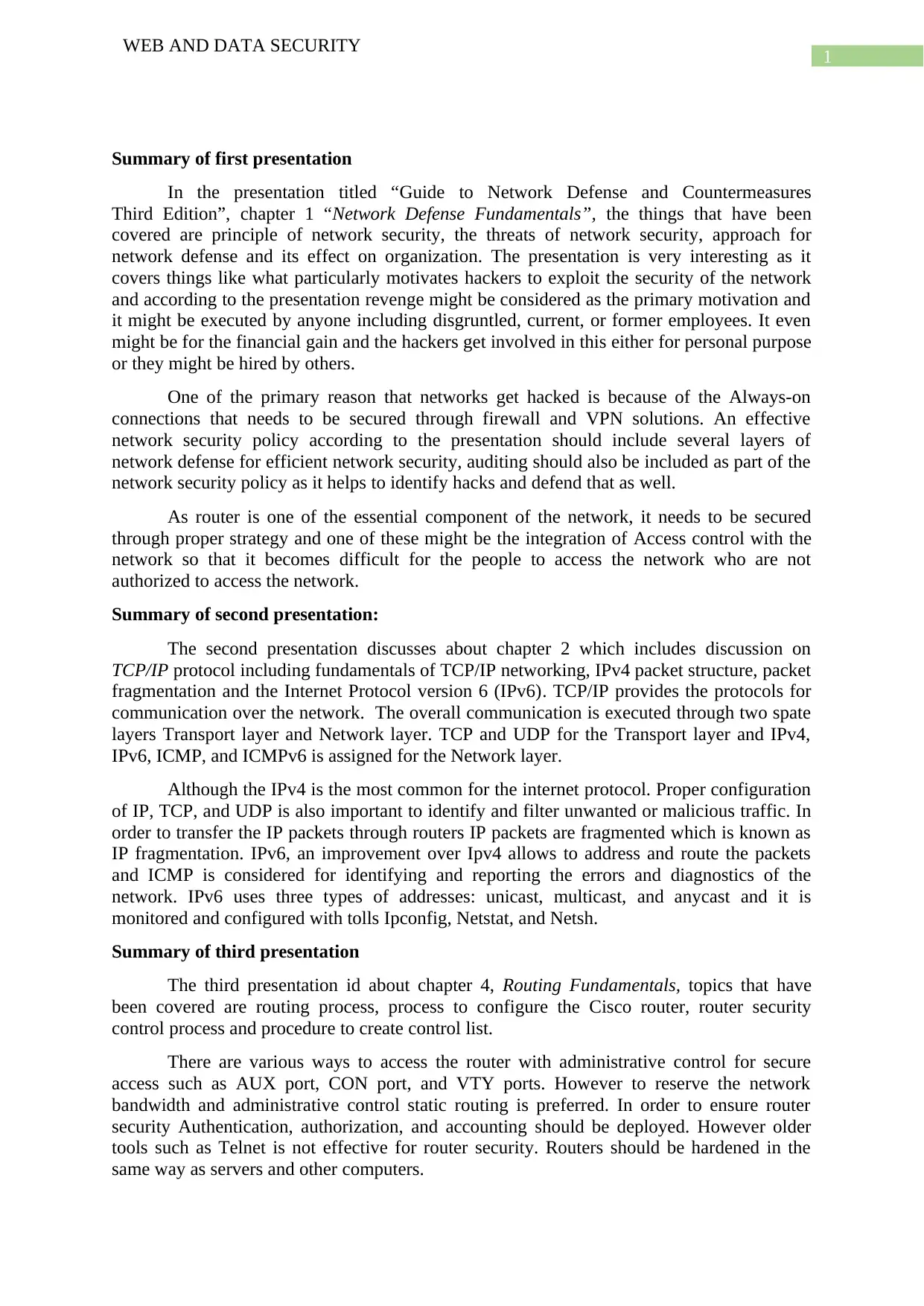University: Web and Data Security - Network Defense and Routing Report
VerifiedAdded on 2023/06/03
|2
|607
|224
Report
AI Summary
This report provides a comprehensive overview of web and data security, focusing on network defense and routing fundamentals. It begins with an analysis of network security threats, including motivations of attackers and the importance of layered defense strategies. The report then delves into TCP/IP protocol, covering its fundamentals, IPv4 and IPv6 packet structures, and the significance of proper configuration. Finally, it explores routing fundamentals, detailing the routing process, Cisco router configuration, router security controls, and access control lists. The report highlights key concepts such as network security policies, authentication, authorization, and accounting, emphasizing the need for proactive measures to protect networks and data. The report is based on the 'Guide to Network Defense and Countermeasures Third Edition' and covers chapters on network defense, TCP/IP, and routing.
1 out of 2







![[object Object]](/_next/static/media/star-bottom.7253800d.svg)